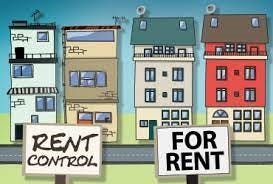Record Setting Apartment Rents are Prompting More Aggressive Tenant Protections
News just broke that the city of San Diego is poised to vote on a no-fault eviction legislation. The law would be the same as Good Cause Eviction (GCE) in NYS. With support from the mayor, the San Diego law would attempt to prevent 15-year tenants from suddenly being removed from their communities and homes. Beyond issues of locating affordable housing options, the issue at hand seems to be the more humane, emotional one: at the drop of a hat, from the tenant’s point of view, he and his family must suddenly change their entire lives. Substantial changes in life make everyone uncomfortable, and when those changes are forced upon you, it’s all the worse.
Tenant advocates and elected officials hear stories about constituents falling short of rent payments every day, and the emotional valence behind those narratives has motivated change. Outside of New York, California and Oregon have passed forms of rent regulations. Saint Paul, Minnesota, now the only Midwestern city with rent regulations, is poised to have some of the most stringent controls. Boston is heavily considering similar bills. How did this seemingly materialize overnight?
One explanation is that economic inequality has grown rapidly. Service workers saw the highest unemployment levels during the pandemic. Blue collar workers were disproportionately more effected by the Covid lock downs than other groups. What’s more, in New York City, approximately 2/3 of residents rent their home versus own it. The lion’s share of service workers and lower income blue collar workers are renters rather than owners of property. That is to say, those affected the worst by the pandemic are also the ones lobbying their communities for help in coping with their rents. If MSAs in the US have similar ratios of renters to owners, then those on the lowest end of the income spectrum will face rental hardships.
On the other hand, multifamily and SFR investments are performing very well. According to Zumper, the median rent in the US for a one-bedroom apartment has reached $1,400. Median rent for a one bedroom in Miami is 40% higher today than it was last year. Median rent in NY is $3,200, the highest in the nation. These rental growth figures have created outsized profits for investors. These profits induce more investors to enter the space to try and create those opportunities for themselves. The increased level of acquisitions leads to more multifamily projects being renovated and improved which yields higher rents. When pieced together, higher investor profits are happening concurrently with higher rents for tenants.
When you contrast the lived experiences of lower income, lower education renter demographics over the last two years with those of multifamily syndicators, it is not difficult to see how the wedge of economic equality is growing wider. Those realities sitting neatly next to each other in MSAs like New York is what prompts legislators to apply controls and rent rules. Entering the multifamily space as an investor right now is a great idea, and there remains more upside to be unlocked, but the undercurrent of tenant protections is not going away any time soon and investors need to be ready for that reality.
Source: Bisnow
Originally published on March 27th, 2022


